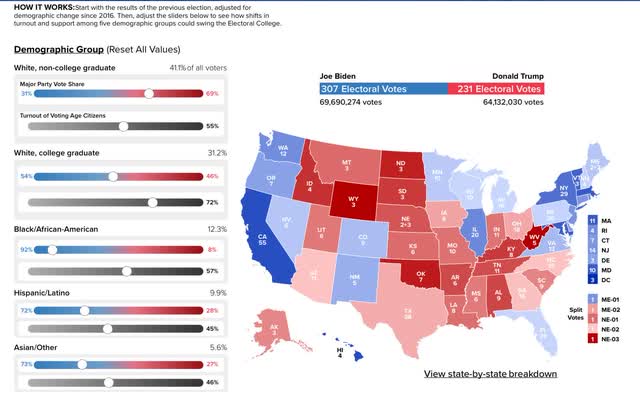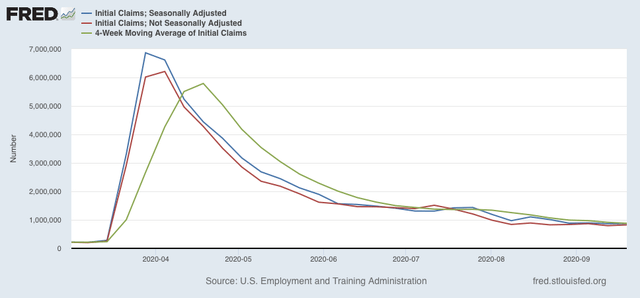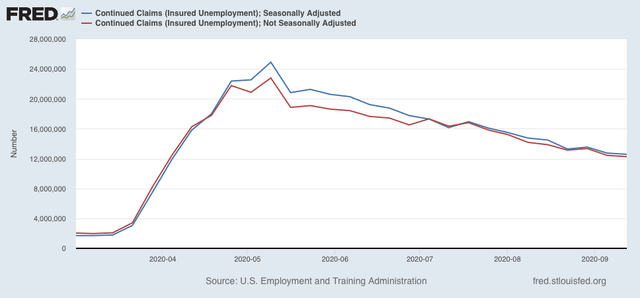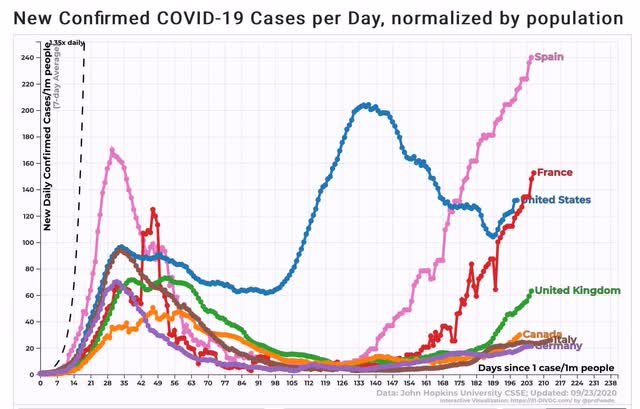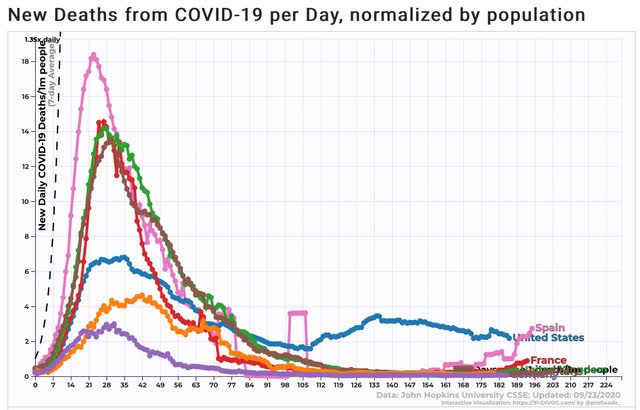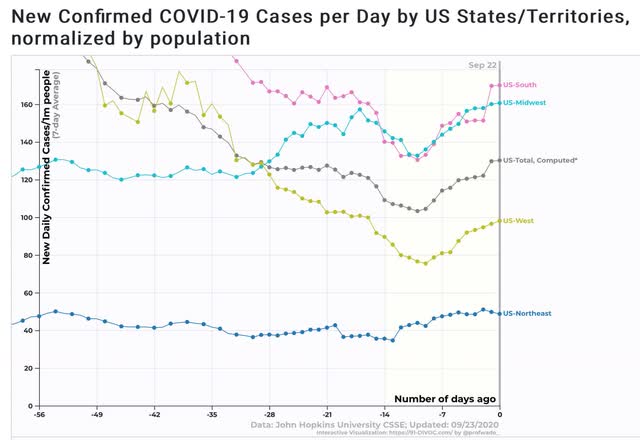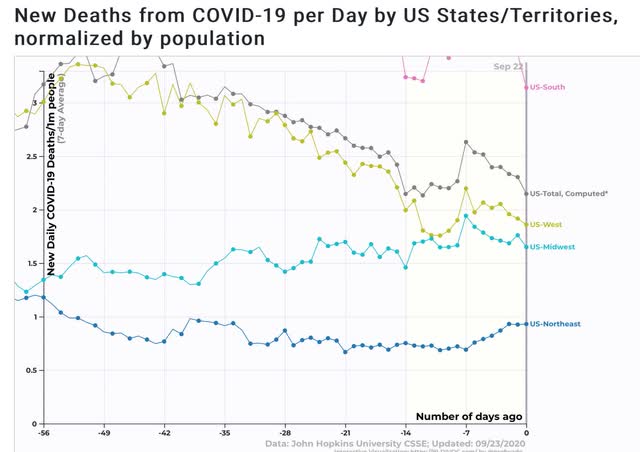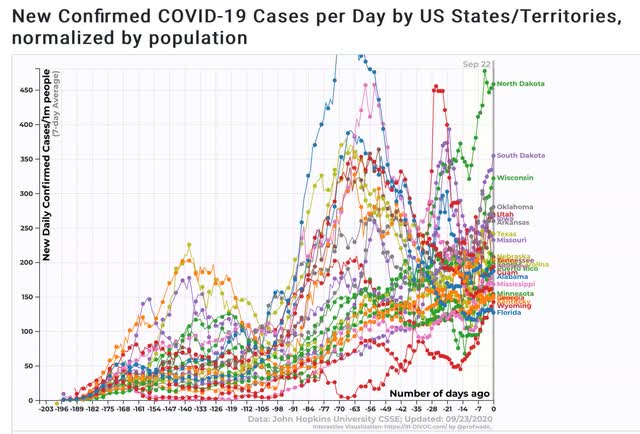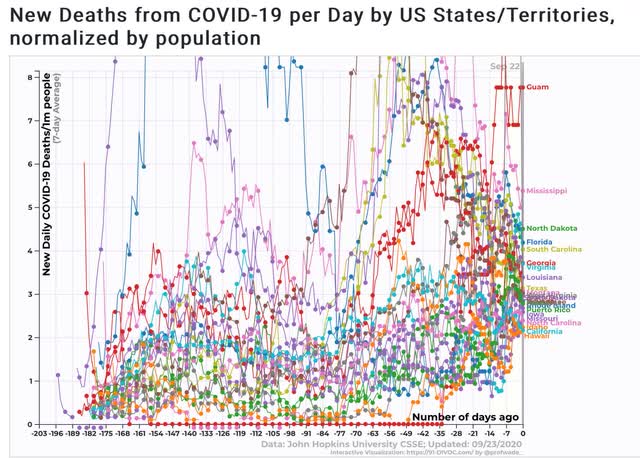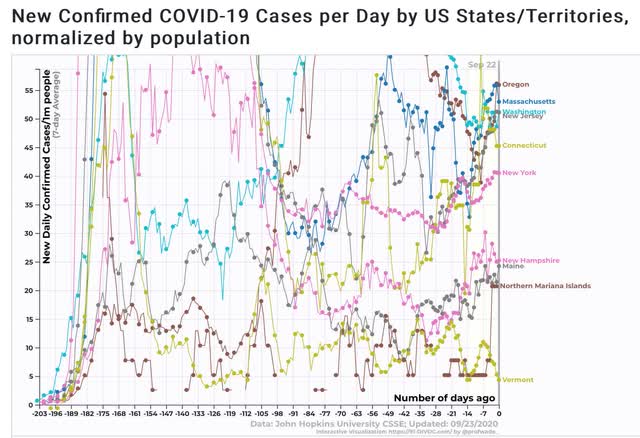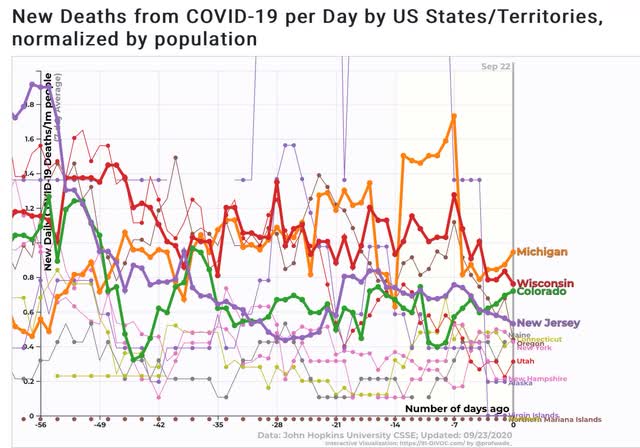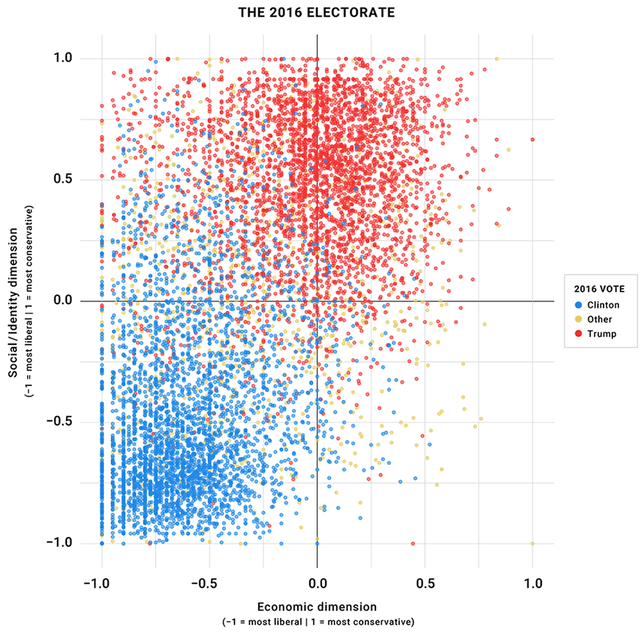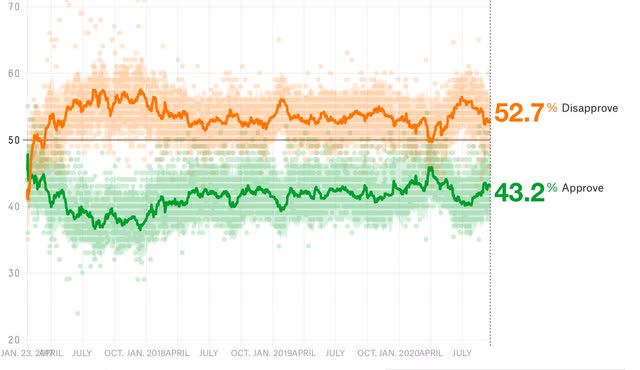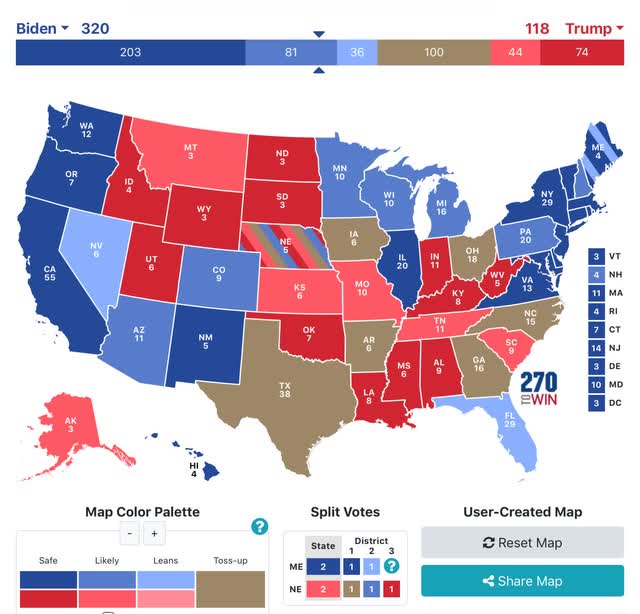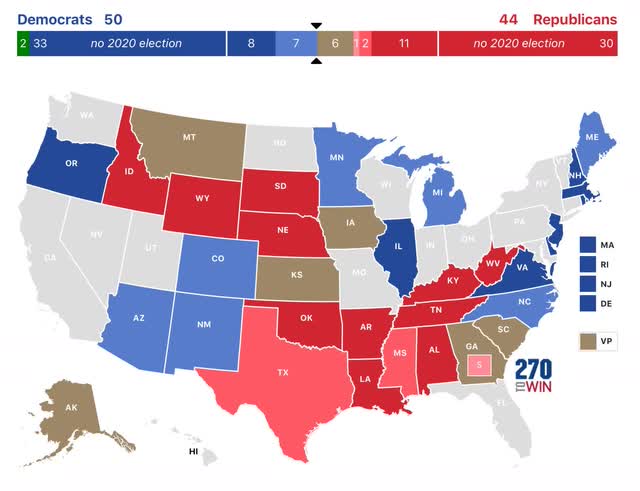- by New Deal democrat
This is a light week for economic data, so don’t be surprised if I take a break for a day or two.
In the meantime, I wanted to post a few graphs that I think give a good “macro” view of the Presidential election this year, and how it is different from 2016.
Aside from the fact that Trump now has a nearly 4 year record, and Presidential elections are usually a referendum on the incumbent President or party, the simple overriding fact is that Biden is viewed much more favorably, or perhaps much less *un*favorably, than Hillary Clinton was in 2016.
To refresh your memory, here are a couple of graphs showing how (dis)liked both Trump and Hillary Clinton were in 2016:
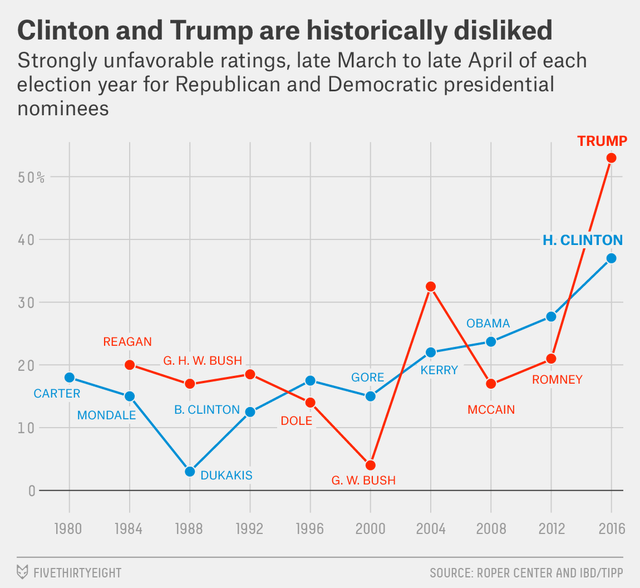
Both were historically more disliked than any other previous candidate of either party. Almost 50% of likely voters *strongly* disliked her, and majority did dislike her:

NOTE IMPORTANTLY: I am not making a value judgment that Hillary Clinton was dislike*able*. I am simply reporting that she was in fact historically disliked. When right in the middle of ongoing early voting, Comey insinuated that she might be a crook, that’s all it took to give Trump his inside straight win in the Electoral College.
As a result of the fact that *both* candidates were historically disliked, there were wide swings in voter intentions throughout 2016, depending on which candidates problems were dominating the front page. Here’s the static-y day by day view:
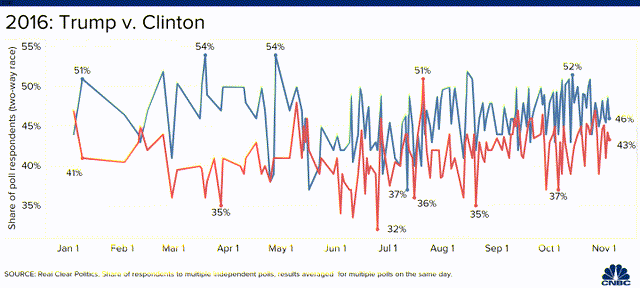
Note that there were several brief periods where Trump actually led.
Here’s a smoothed out view of the year:
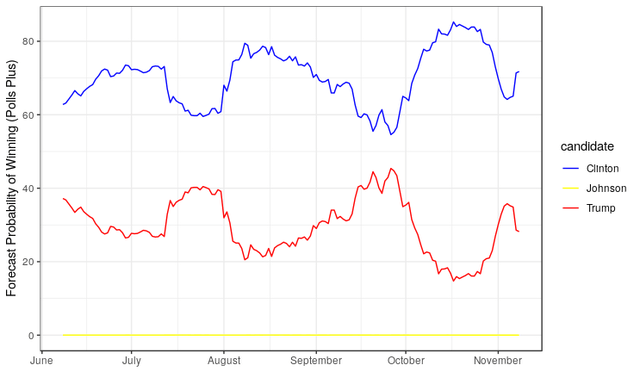
And here is the forecast probability of winning:
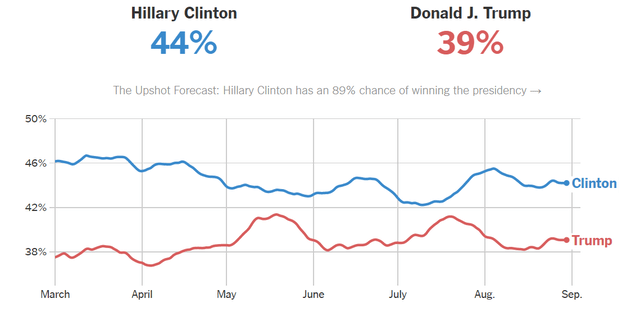
As I said above, there were wide swings in the race.
Before I go further, let me add into the mix this graph of the average deviation in polls depending on the time to the election:
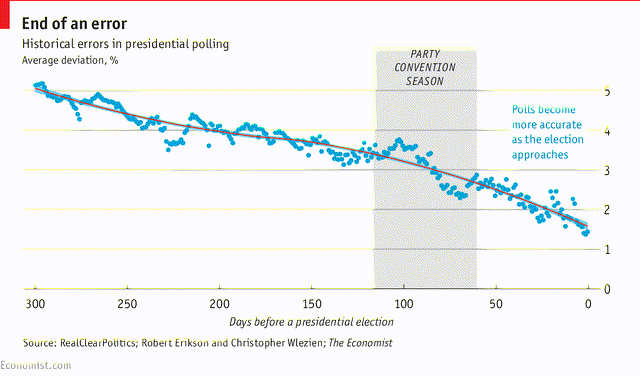
As I write this, we are 43 days from the election, meaning that there’s an average of about 2.3% error in polling compared with the actual result.
Now let’s compare that with 2020 so far. Here’s Nate Silver’s summary of national polling for the past 6 months:
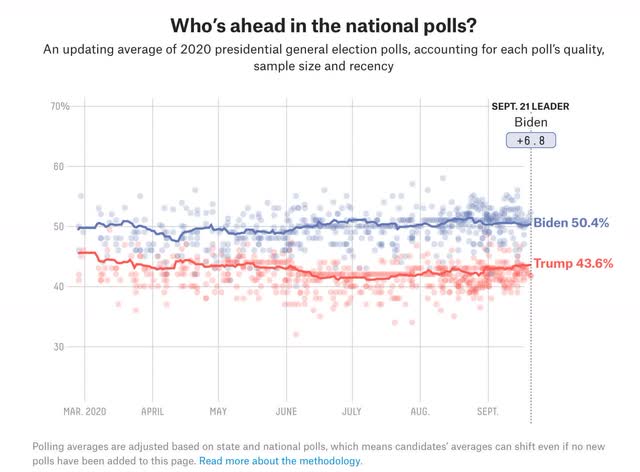
This has been a remarkably steady race for months on end. Even when Trump got the most benefit from his brief “rally round the flag” moment in early April, he still trailed Biden by 3.5%, 44.1% to 47.6%. For the past month, Biden has polled very close to 50% in either direction consistently.
In short, there’s every reason to believe that the polling this year is closer to the ultimate result than has historically been the case. I’m not even sure the thermonuclear bomb of Justice Ginsburg’s death is going to have much of an effect on the polling; at most I suspect it will increase the population of likely voters.
